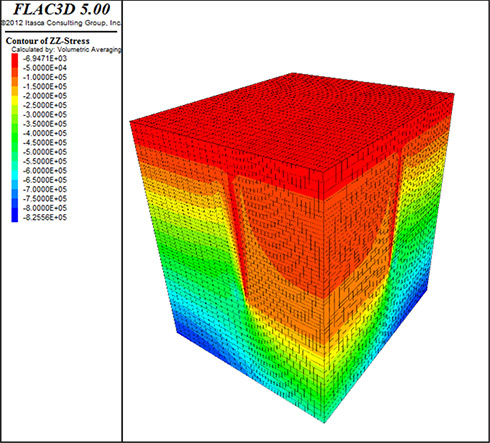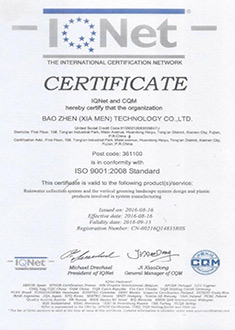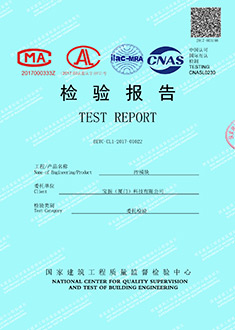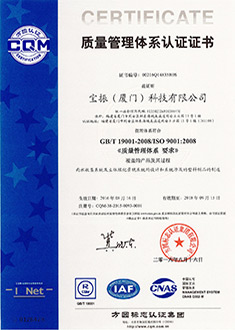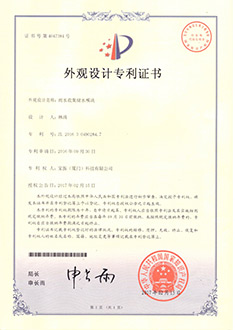Certificates of Underground Modular Tanks
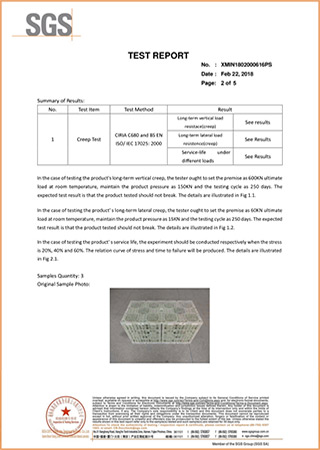
Creep Test
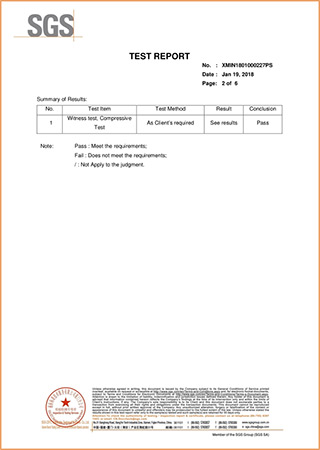
Compressive Test
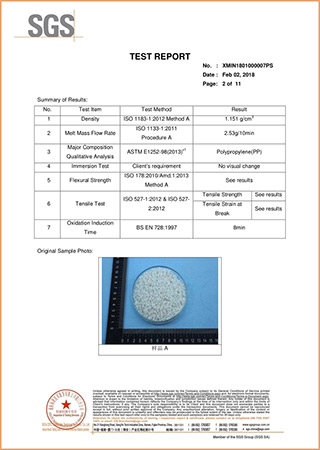
Density Test
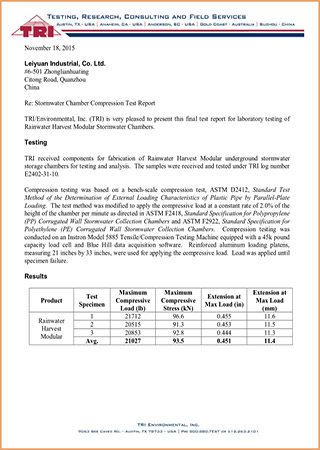
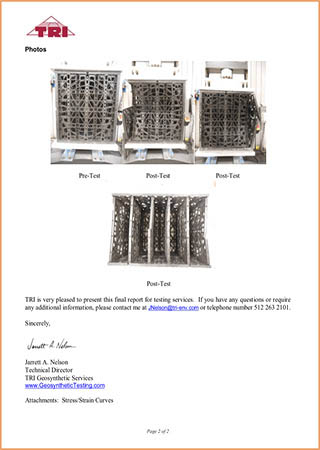
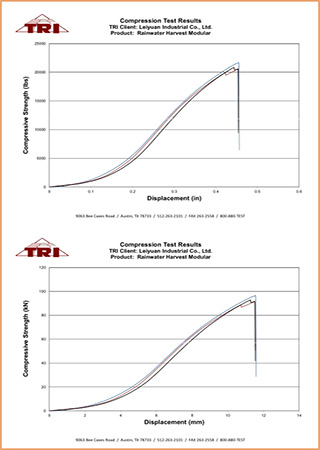
Stormwater Chamber Compression Test Report
TRI/Environmental, Inc. (TRI) is very pleased to present this final test report for laboratory testing of Rainwater Harvest Modular Stormwater Chambers.
TRI received components for abrication of Rainwater Harvest Modular underground stormwater storage chambers for testing and analysis. The samples were received and tested under TRI log number E2402-31-10. Compression testing was based on a bench-scale compression test, ASTM D2412, Standard Test Method of the Determination of External Loading Characteristics of Plastic Pipe by Parallel-Plate Loading. The test method was modified to apply the compressive load at a constant rate of 2.0% of the height of the chamber per minute as directed in ASTM F2418, Standard Specification for Polypropylene (PP) Corrugated Wall Stormwater Collection Chambers and ASTM F2922, Standard Specification for Polyethylene (PE) Corrugated Wall Stormwater Collection Chambers. Compression testing was conducted on an Instron Model 5885 Tensile/Compression Testing Machine equipped with a 45k pound capacity load cell and Blue Hill data acquisition software. Reinforced aluminum loading platens, measuring 21 inches by 33 inches, were used for applying the compressive load. Load was applied until specimen failure.
Stress Analysis Report of Underground Modular Tanks
The conclusions and suggestions
1. This calculation is based on the simulation of the general geotechnical parameters, the conclusion obtained is that when the rainwater infiltration tanks were in the most adverse conditions, they still meet the vertical compressive strength and lateral compressive strength requirements , and the infiltration tanks are in a safe condition.
2. The results of this calculation are only of reference value, for a specific project still need to obtain geotechnical parameters after exploration and then calculate for the project.
3. In this calculation, the general soil and rock layers are using grading excavation. After obtaining detailed survey data, it is suggested to conduct detailed excavation and support design.
